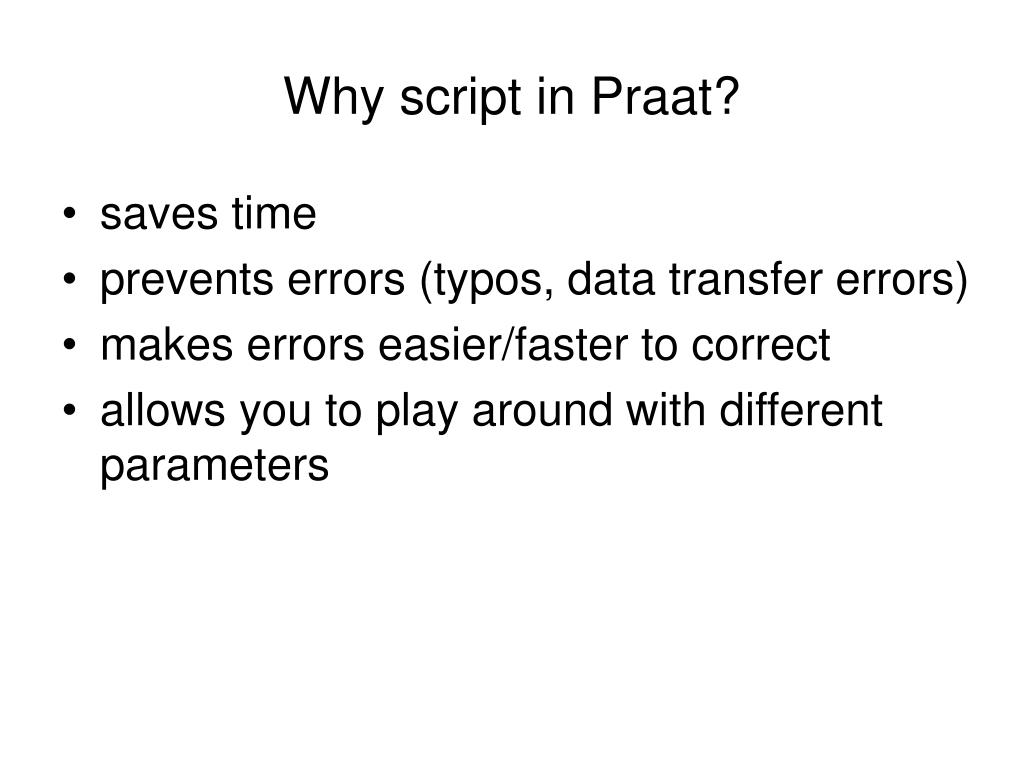

In addition to repetitive interruptions in breathing during sleep, patients may have some signs and symptoms, including chronic snoring, memory or concentration problems, daytime sleepiness, sore throat, or dry mouth. This disease affects approximately 4 to 7% of adults in the general population. OSAHS has been identified as a risk factor for hypertension, heart disease, stroke, and even cancer. One or more sites of obstruction may include the soft palate, tongue, lateral walls, and/or epiglottis.

Obstructive sleep apnea-hypopnea syndrome (OSAHS) is characterized by the narrowing and collapse of pharyngeal structures during sleep, resulting in intermittent hypoxemia and sleep disruption.
#Praat download software
There was a strong correlation and consistency between the parameters calculated by the two software programs. The two acoustic software programs present different values of acoustic measures. Patients with OSAHS were prone to vibration irregularity, incomplete glottal closure, hoarseness, and other vocal problems. The results demonstrated that high correlations were found between values obtained by both software programs. In normal persons, there was a significant difference in NHR however, no significant differences were found for F0, jitter, or shimmer between the two software programs.

The results for F0, jitter, shimmer, and NHR were significantly different between MDVP and Praat in OSAHS patients. The receiver operating characteristic (ROC) analysis suggested that the shimmer obtained from MDVP and Praat possessed relatively high accuracy in differentiating patients with OSAHS from healthy individuals. The VHI-10 values were significantly increased in patients with OSAHS. There were no statistically significant differences in the fundamental frequency (F0), jitter, shimmer, noise/harmonic ratio (NHR), contact quotient perturbation (CQP), or contact index perturbation (CIP) between the patient group and the normal group. A self-rated scale (Voice Handicap Index, VHI-10) and acoustic parameters were compared. Patients with OSAHS (n = 75) and normal controls (n = 46) were asked to produce a sustained sound of the vowel /i/ and were analyzed with electroglottography (EGG), MDVP, and Praat software. The purposes of this study were to explore the effect of obstructive sleep apnea-hypopnea syndrome (OSAHS) on the voice by analyzing the acoustic parameters between patients with OSAHS and those without OSAHS and to compare acoustic analyses performed by two software programs (MDVP and Praat).


 0 kommentar(er)
0 kommentar(er)
